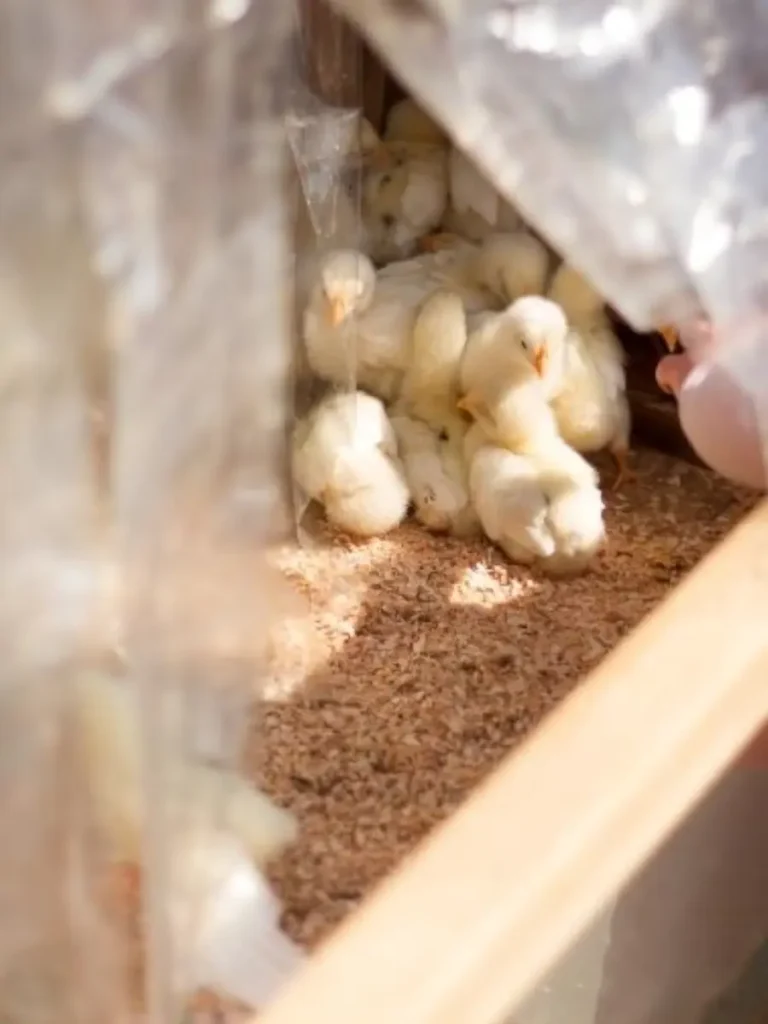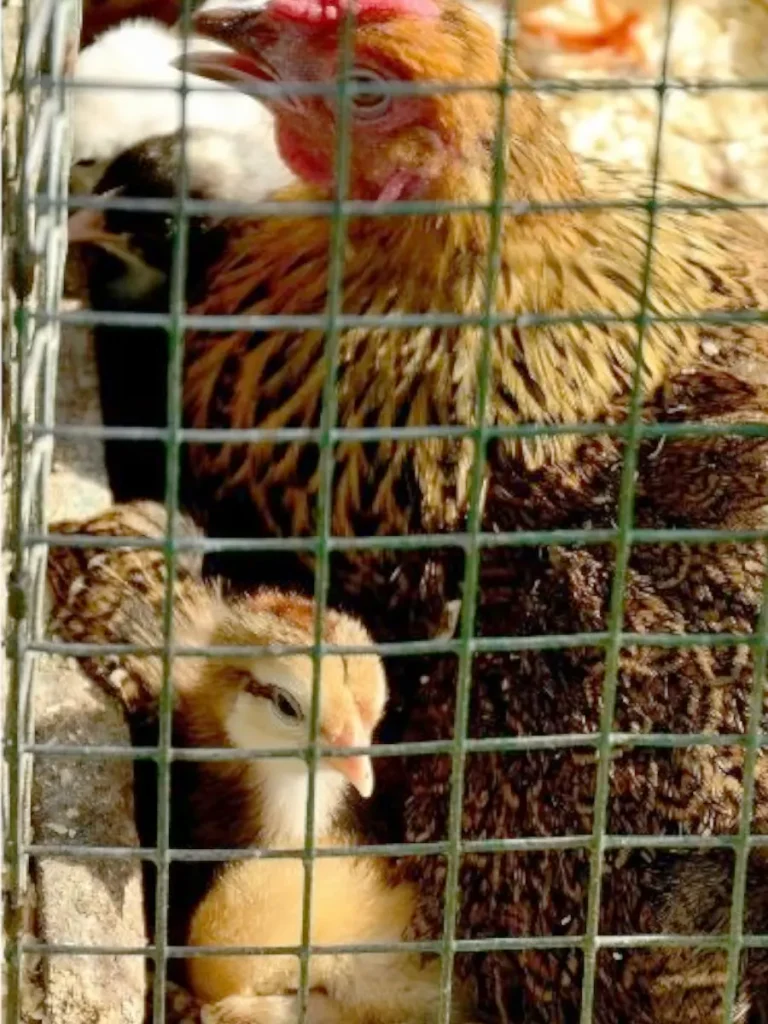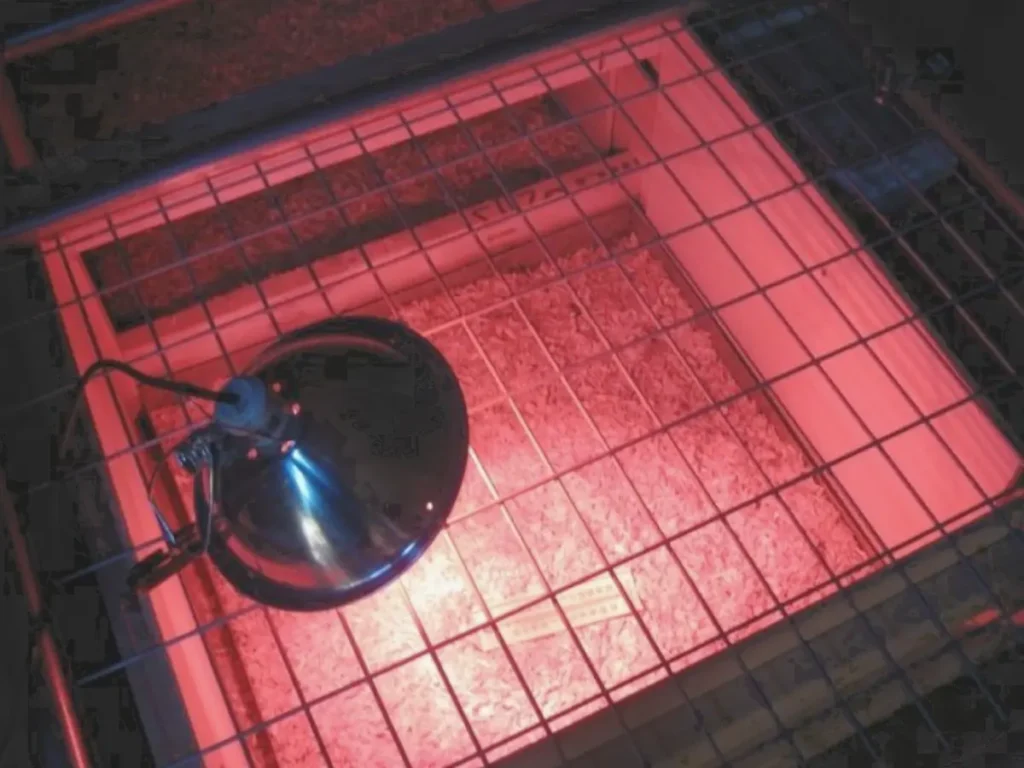Chicken Brooder Box: 2023 Setup Guide
So you’re looking to enrich your life by turning little chicks into some hens and roos? Need some brooder ideas to get started? Well, this article is for you! We’ll go through some of the stages of chick development and the features of a chicken brooder that will best help those babies grow into productive adults.
What is a Chicken Brooder?
We’d say a chick brooder is any space you prepare to keep chicks safe, warm, and fed from the time they’re day-old chicks to when they become a pullet (teenager). This is usually around 6 weeks depending on breed. Basically, it’s a mini chicken coop.
It’s called a brooder because it’s taking the place of the conditions a hen would create when she’s broody. A hen gets broody when her hormones have spiked and her motherly instincts have kicked in.
With that in mind, you’ll look for ways to provide the same care and conditions within your brooder that a broody hen would create if she could use tools and shop with a credit card!

Making Everyone Happy
Raising your own chicks can be incredibly rewarding. And when the chicks are happy, everybody’s happy! So, when you design the brooder, let the happiness of your chicks, as well as yourself, guide your decisions.
Nobody wants a sassy hen or a cocky roo. With that in mind, you want to raise your chicks in a healthy environment. This way, they develop better socially with each other as well as with you. Which makes working with each other much more pleasant- actually, down right fun!
But your happiness is important too! If you constantly have problems to take care of, you may end up resenting your choice to raise chicks. So, let’s look at some options for your brooder box that will create the best experience for everyone!

Chicken Brooder Box
The box itself can be virtually anything that keeps the chicks in and everything else out. A kiddy pool, dog crate, and a plastic storage bin make for a common DIY chick brooder box.
The smaller the flock, the more your DIY chick brooder means is likely using something you already have. The larger the flock, the more likely your DIY chicken brooder means actually building something.
When picking what material it will be made of, make sure it’s washable and strong enough to keep out cats and dogs if you have them.
You’ll also need to consider if you’ll need your brooder box covered and ventilated.

Brooder Size
What size brooder do you need for your chicks? That’s going to depend on the size of your baby flock and how long they’re going to stay in the brooder.
Here’s the rule of thumb: newly hatched chicks to four weeks old need about 1/2 a square foot per chick and chicks between 4 and 8 weeks need about 1 square foot per chick. This is available floor space after you have added waterers, feeders, heat lamps, etc.
A smaller pen may be more than enough space for ten chicks in the first few weeks but as the chicks grow, they’ll likely need a large container or be separated into additional pens.
If they’re going to stay in the chicken brooder until they’re a pullet, it may be easier to use a brooder that will accommodate pullets from the very beginning.
(A pullet is kind of like a teenage chicken. They’ve finished molting, have their adult feathers, and are ready to be socialized by adult chickens.)


Small DIY Chick Brooder Ideas: 1-4 Pullet Size Chickens
Small brooders may be the easiest to come up with for your backyard chickens since you can use almost anything lying around.
A 2’x3′ dog crate will accommodate the growth of four chicks to pullet size and still have enough room for their brooder accessories. Wire kennels make it easy to hang a heat lamp from the top.
A 36″ kiddie pool will work well for 4 chicks but tend to have short walls, so you’ll have to have a taller brooder once they’re big enough to fly out of the pool. The nice thing about a kiddie pool is that it’s easy to clean.
An old patio storage bin (2’x3′) you may have lying around could be your easy DIY chicken brooder. This is a pretty durable and easy-to-clean option complete with lid! However, you may need to drill holes in the walls and lid to provide fresh air.

Medium to Large DIY Chick Brooder Ideas: 5+ Pullet Size Chickens
Once you get beyond 4 chicks, the options above get to be too confined and unhealthy for older chicks, plus the likelihood of something big enough lying around that can accommodate 5+ chickens gets a bit harder.
Now it may be time to start thinking about either splitting the chicks up into multiple, small brooders (which means buying more waterers and feeders), or building something.
One option is to build a PVC frame, wrap chicken wire around the sides, and zip-tie the chicken wire to the PVC. Just be careful to keep the sharp points of the chicken wire bent back to keep your birds from injury. You can place this on top of concrete or a tarp and use a tarp or net for the top.
If you think you’re going to raise chickens on a more regular basis, consider building something more permanent.
A smaller chicken coop with a chicken run can provide the space needed to house your chicks’ accessories and still have room to play and exercise. Plus, a small chicken coop is small/light enough to bring into the garage when they’re more vulnerable and then move to the backyard when they get bigger.
An old fence-style dog kennel can also accommodate a large number of chicks to pullet size. You’ll want to wrap the walls with chicken wire and make sure they can’t escape through the door.


Manufactured Chicken Brooders
Unlike the DIY chicken brooder, which gives a combination of flexibility and challenges, manufactured brooders are brooder box ready.
They come with all the accessories built in, are easy to clean, and are available in many sizes and levels (that’s right! Levels! Some come in stacks of brooders to save floor space and keep you from having to bend over as much).
If you’re going to be hatching chicks and selling them for profit, manufactured brooders along with a good incubator will take care of them efficiently. From the moment your eggs have hatched, these brooders will provide an easy life for you, and a warm comfortable life for your chick.
Unfortunately, this is likely the most expensive option, so if you’re just trying to raise chickens to see what it’s like, the DIY options are going to be a better fit.

Sick Bay
During the first few days, chicks are especially vulnerable to cold and injury. It’s not a terrible idea to have a small DIY chick sick bay with the basic accessories for food, water, and a way to keep them warm.
As they mature the first few weeks, your birds will be more resilient to cold but are still prone to injury and being picked on by more aggressive birds. Having an extra “house” to separate vulnerable chicks will make life better for everyone.

Chick Brooder Basics
Now that we can size our brooder we need to know what to put into it. Chicks are going to need a feeder, a waterer, a heat source, and clean/dry bedding.
There are lots of options when it comes to your chick’s temporary house, remember the goal is for everyone to be happy.
Brooder Bedding
When you consider bedding for your brooder, you need to consider what type of material you’re going to use, how much material you’re going to use, how often you’re willing to change it, and what you’re going to do with it when it’s soiled.
Bedding Materials
Pick materials that are moisture-absorbing and easy to clean. Avoid treated wood and any kind of aromatic wood like cedar.
A common material is pine shavings for brooders and coops alike, but you can use dry sand and straw too. Also, the material you choose may depend on what you plan to do with it when it’s soiled.
How Much Bedding Do You Use?
The biggest reason you use bedding is to absorb waste and keep the chicks dry, which keeps illness-causing elements at bay.
The more you use, the less often you will have to change the bedding. Some people use 2-4 inches of bedding and change it once or twice a week.
However, just because the bedding is absorbing the waste, doesn’t mean it’s not there. Plus, it’s not very fun to scrape 4″ of potent clumps of bedding out of your brooder.
We have found that it’s easier and more tolerable to use 1-2 inches on the bottom of the brooder and change it every day.
What Do You Do With Used Bedding?
If it’s not too much, you can simply throw it away like you would cat litter (don’t ever use cat litter for chickens!) However, adding it to the compost pile or selling it are great options too. Pine shavings and sawdust mix well with chicken manure for good compost.
Consider saving the bags you use for chicken feed and filling them with soiled bedding. Check out local sources like Facebook Marketplace or Craigslist to see what others in your area are selling for.


What Brooder Temperature Do Chicks Need
Remember that the brooder is meant to replace the conditions mama hen would provide and baby chicks don’t have the internal furnace required to keep their body heat up without help.
New chicks need a 90 to 95-degree heat source in the first week and many sources will recommend that you reduce the temperature by 5 degrees per week.
The two most common methods to replace mamma hen’s warmth are with a heat lamp or heated brooder plates.
Heat Lamps
The least expensive way to keep your chicks warm is to use a heat lamp. If you choose this method, you’ll also want to buy a thermometer so you can regulate the distance your heat lamp needs to be away from the chickens.
This can sometimes be challenging if the temperature changes throughout the day. You also should keep the heat focused on one end or corner of the brooder so the chicks have a safe place to go if it gets too hot.
In addition, the surface of a brooder lamp could potentially cause a fire with the bedding if it falls into the brooder.
Brooder Plates
While it’s a bit more expensive, we find it’s easier to use a brooder plate. The plate provides an even heat source and is adjusted by raising or lowering it on its legs.
This is a nice feature, as you can adjust the height as the chicks grow, allowing chicks to easily moderate their own temp without constant attention. Some also have anti-roosting cones on top that help keep the mess down.

Where To Place Brooders
So, where will I put my chicken brooder?
It should be close enough for you to monitor and take care of the chicks daily but far enough away that predators feel bold enough to start harassing your flock.
You also don’t want it close to drafty areas in cold weather as drafts will chill the chicks and easily result in death.

Feeders For Chicks
In the end, feeders are feeders, but what makes a good feeder for chicks is size.
Many adult feeders may be too tall for baby chicks to reach and the openings can be too big, which allows a chick to fit inside the feeder.
When picking out a chick feeder, pick something that prevents them from soiling their chick feed.
The openings should keep them out of the feeder and be designed in such a way that they can’t perch over their feed.
Waterers For Chicks
From the moment your chicks arrive until they go into the chicken coop, they’re going to be thirsty little birds. Like feeders, you’re going to want to keep your water clean by choosing a waterer that the chicks can’t fit in, or perch over.
One challenge with some waterers is keeping the bedding out of the water. You’ll be surprised how quickly a small flock of baby chicks can clog a waterer.


